Abstract
Epithelial sheets from rat jejunum and descending colon have been shown to respond to angiotensin II (AII) when studied under short-circuit conditions and bathed on both sides with Krebs-Henseleit solution. The octapeptide AII elicited increases in short-circuit current (SCC) in preparations of jejunum and decreases in SCC in the descending colon; both responses occurred when the peptide was applied to the basolateral surface, but not when applied to the apical solution. Responses in both tissues were highly specific, being inhibited by a range of AII antagonists with the following order of potency: [Sar1. Thr8]-AII greater than [Sar1. Leu8]-AII greater than [Sar1. Ile8]-AII greater than [Sar1. Ala8]-AII greater than [Des,Asp1. Ile8]-AII in rat jejunum. AII responses were not affected by alpha- or beta- adrenoceptor antagonists, atropine or tetrodotoxin. AII responses were totally inhibited by the chloride channel blocker, diphenylamine-2-carboxylate (DPC) while cotransport inhibitors e.g. piretanide and frusemide significantly reduced the size of AII responses in colon and jejunum. These patterns of activity suggest that in the jejunum the responses result from electrogenic chloride secretion. Although AII responses in colon were sensitive to DPC the transporting ions have not yet been identified. Both piroxicam and indomethacin inhibited the increase in SCC elicited by AII in the jejunum, and the reduction in SCC caused by AII in the colon. Taken together these results indicate that eicosanoids are involved in AII responses in both tissues. This is the first study to demonstrate a direct, electrogenic effect for AII on transporting epithelia from the gastrointestinal tract.(ABSTRACT TRUNCATED AT 250 WORDS)
Full text
PDF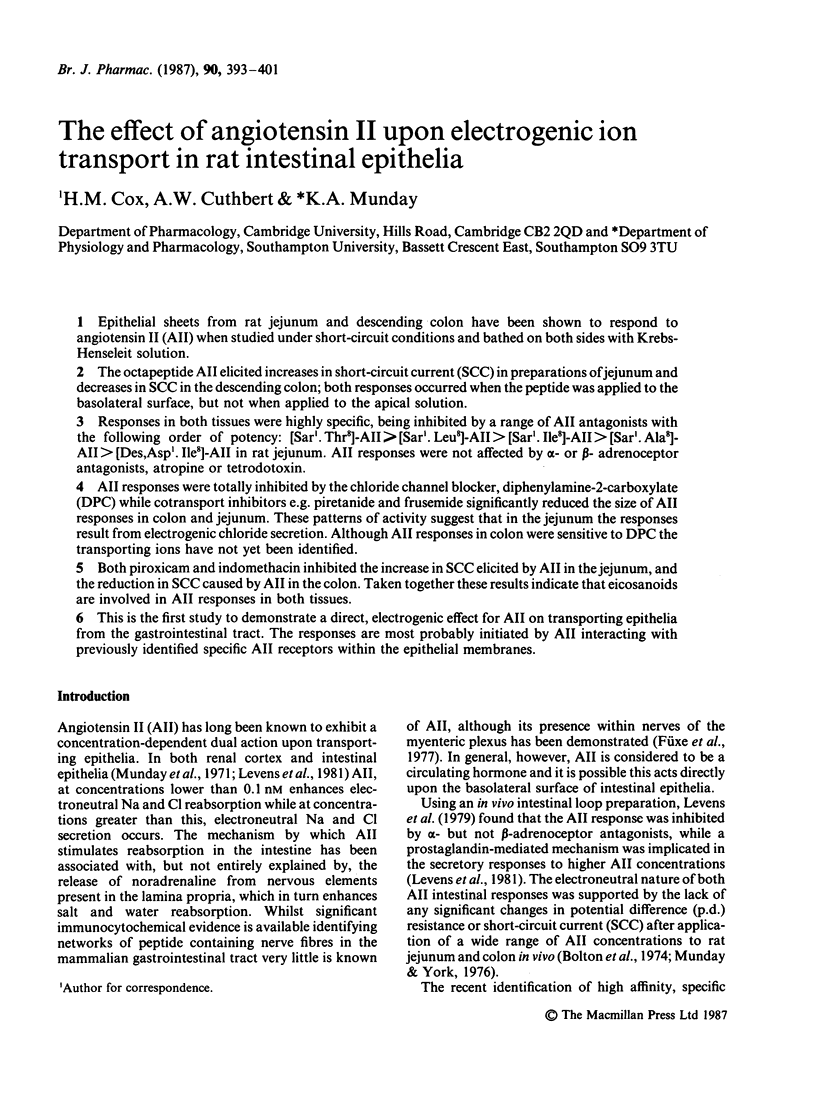
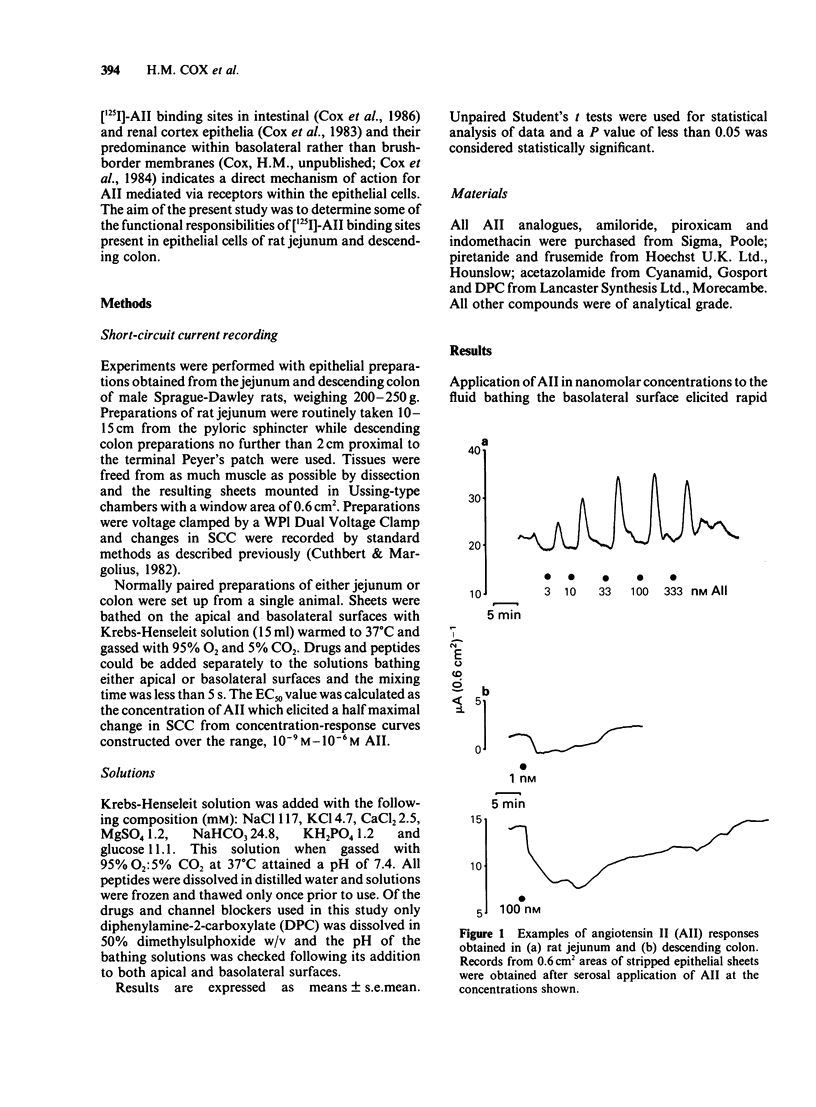
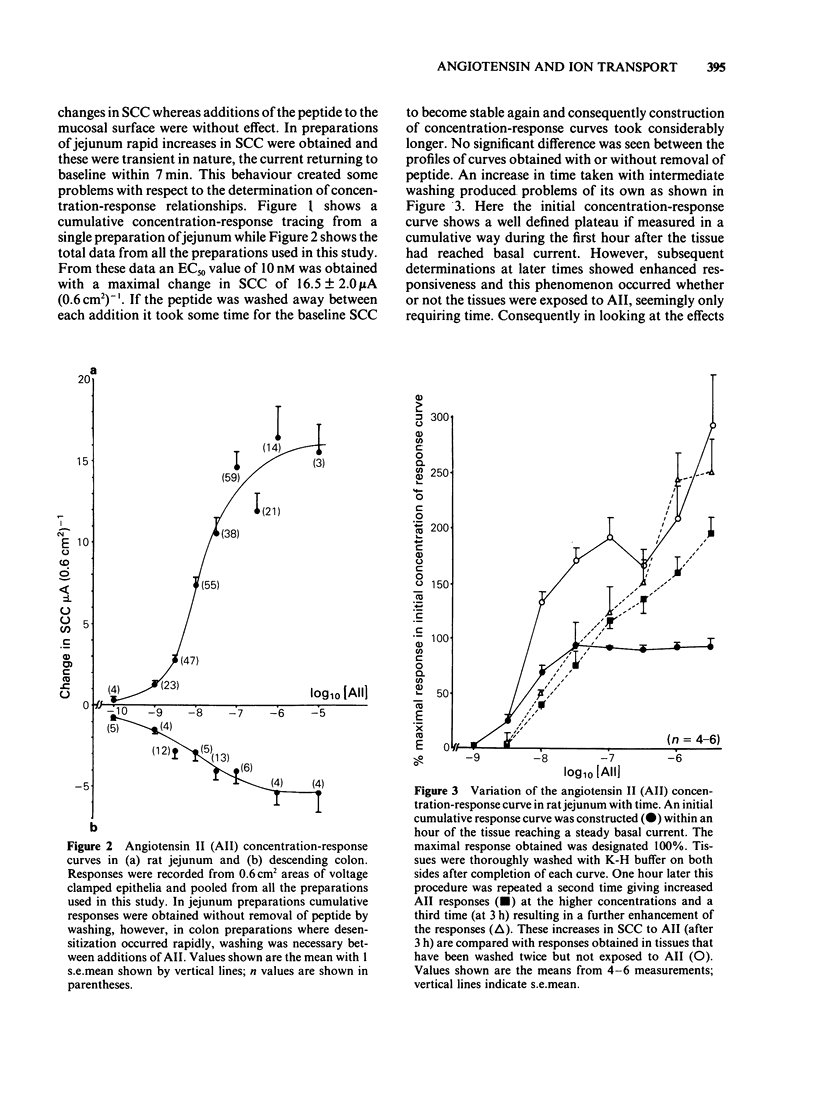
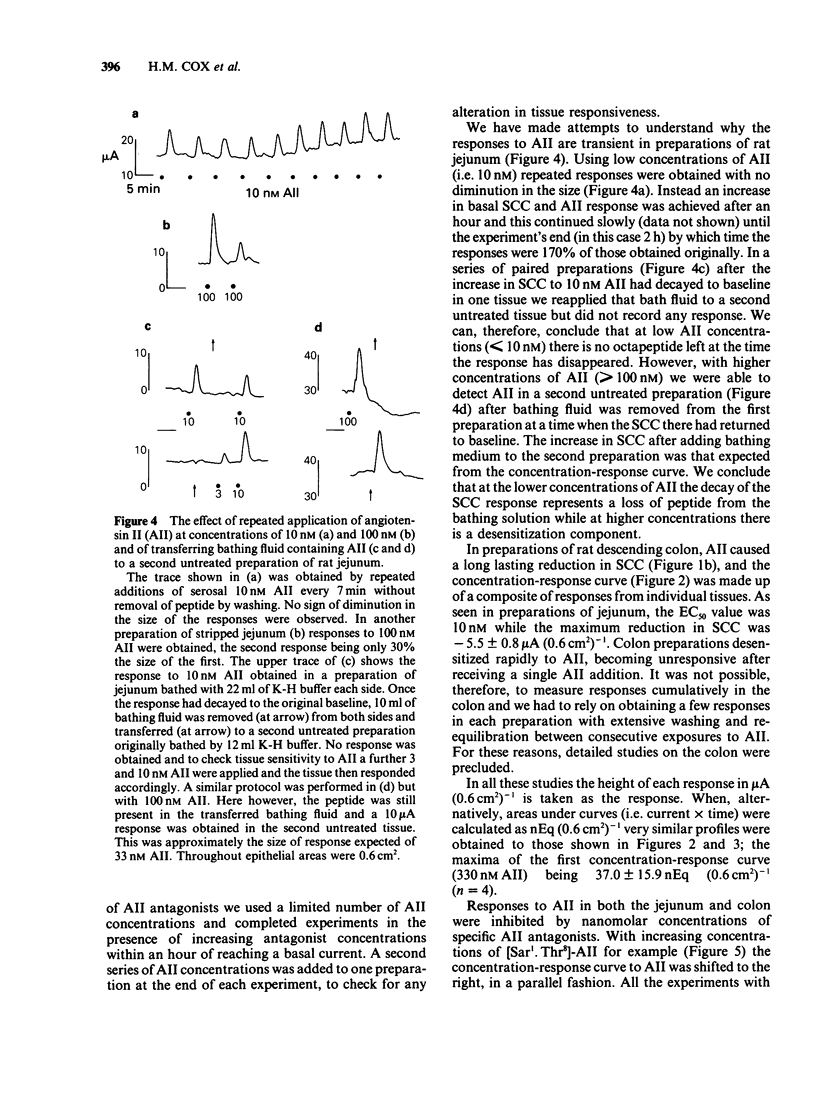
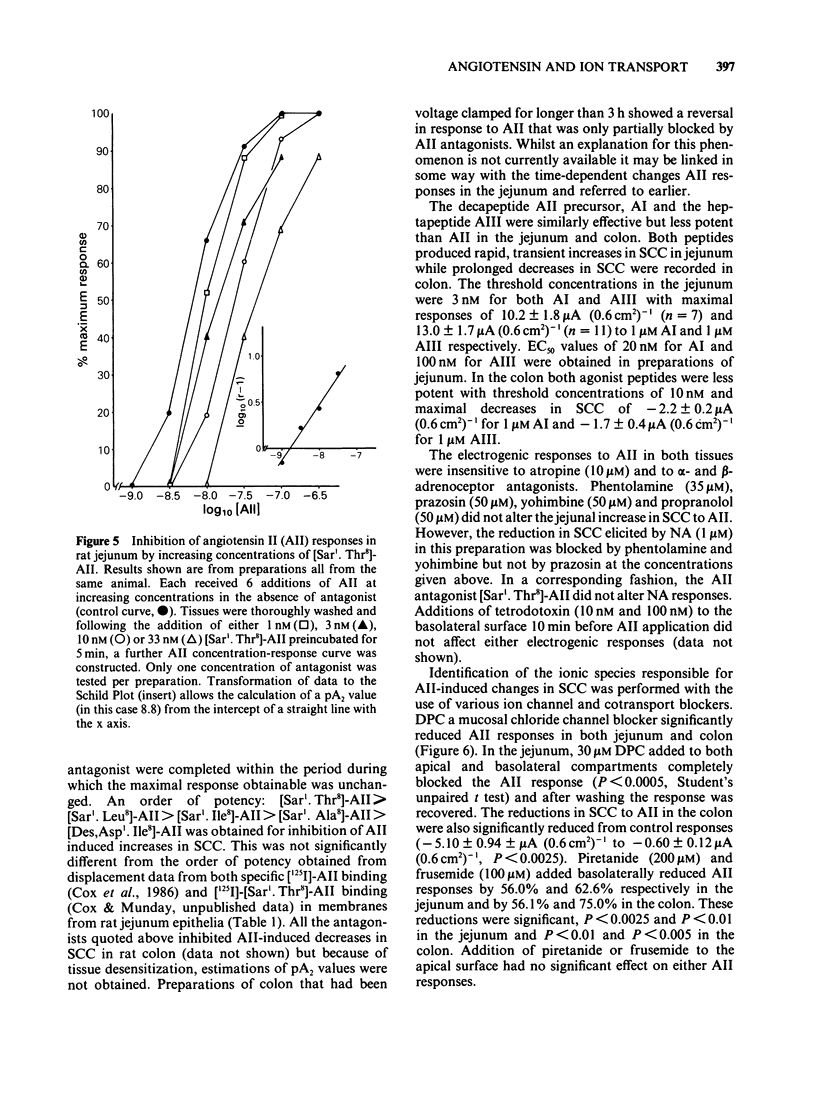
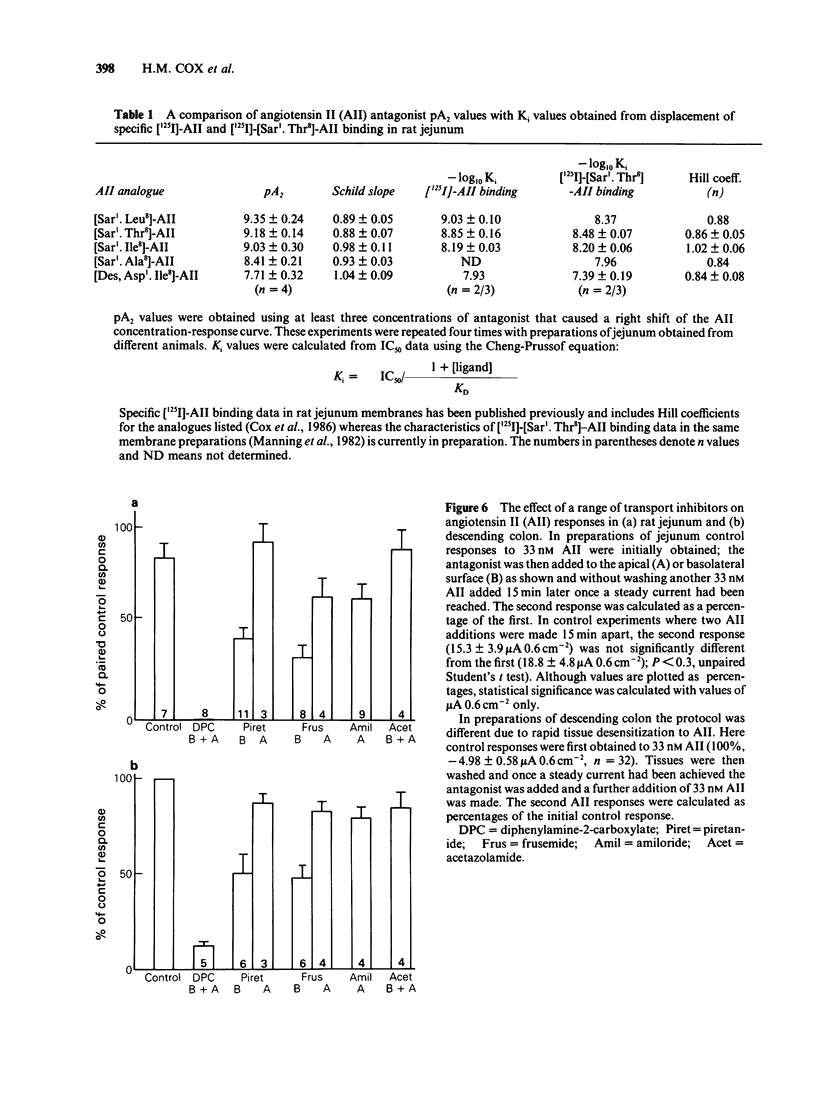
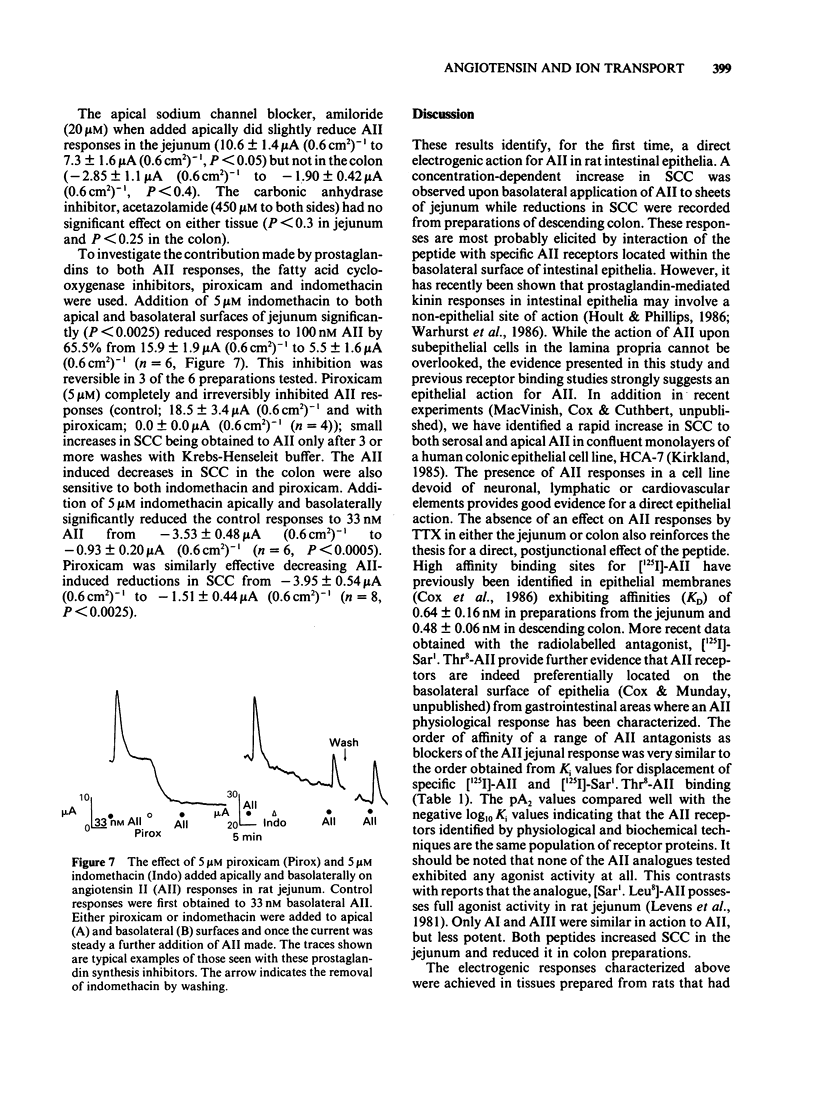
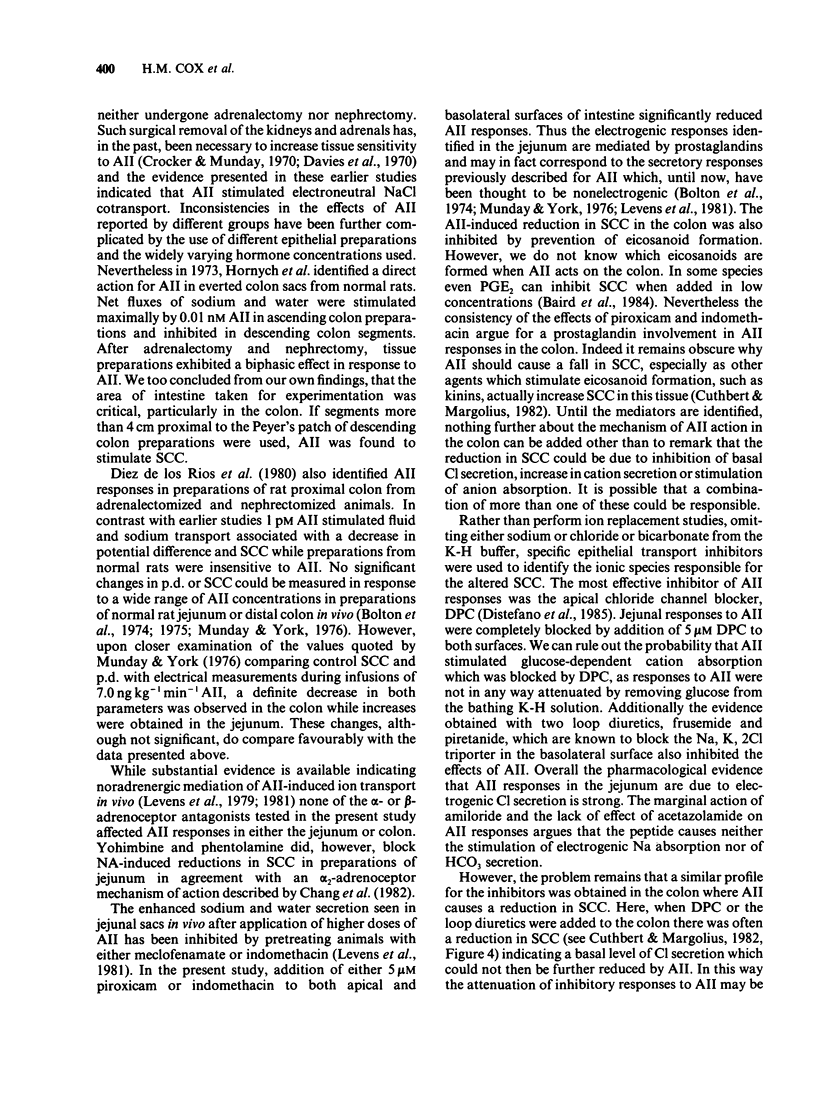
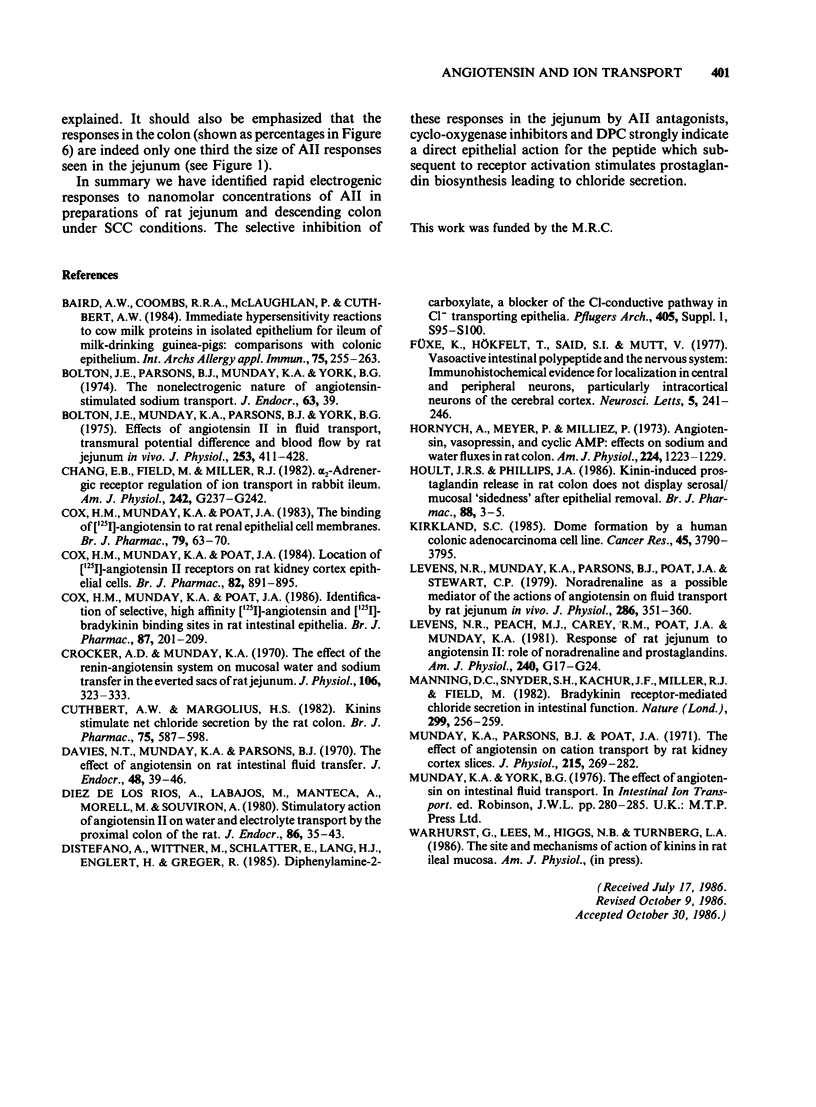
Selected References
These references are in PubMed. This may not be the complete list of references from this article.
- Bolton J. E., Munday K. A., Parsons B. J., York B. G. Effects of angiotensin II on fluid transport, transmural potential difference and blood flow by rat jejunum in vivo. J Physiol. 1975 Dec;253(2):411–428. doi: 10.1113/jphysiol.1975.sp011197. [DOI] [PMC free article] [PubMed] [Google Scholar]
- Chang E. B., Field M., Miller R. J. alpha 2-Adrenergic receptor regulation of ion transport in rabbit ileum. Am J Physiol. 1982 Mar;242(3):G237–G242. doi: 10.1152/ajpgi.1982.242.3.G237. [DOI] [PubMed] [Google Scholar]
- Cox H. M., Munday K. A., Poat J. A. Identification of selective, high affinity [125I]-angiotensin and [125I]-bradykinin binding sites in rat intestinal epithelia. Br J Pharmacol. 1986 Jan;87(1):201–209. doi: 10.1111/j.1476-5381.1986.tb10172.x. [DOI] [PMC free article] [PubMed] [Google Scholar]
- Cox H. M., Munday K. A., Poat J. A. Location of [125I]-angiotensin II receptors on rat kidney cortex epithelial cells. Br J Pharmacol. 1984 Aug;82(4):891–895. doi: 10.1111/j.1476-5381.1984.tb16487.x. [DOI] [PMC free article] [PubMed] [Google Scholar]
- Cox H. M., Munday K. A., Poat J. A. The binding of [125I]-angiotensin to rat renal epithelial cell membranes. Br J Pharmacol. 1983 May;79(1):63–70. doi: 10.1111/j.1476-5381.1983.tb10496.x. [DOI] [PMC free article] [PubMed] [Google Scholar]
- Crocker A. D., Munday K. A. The effect of the renin-angiotensin system on mucosal water and sodium transfer in everted sacs of rat jejunum. J Physiol. 1970 Feb;206(2):323–333. doi: 10.1113/jphysiol.1970.sp009015. [DOI] [PMC free article] [PubMed] [Google Scholar]
- Cuthbert A. W., Margolius H. S. Kinins stimulate net chloride secretion by the rat colon. Br J Pharmacol. 1982 Apr;75(4):587–598. doi: 10.1111/j.1476-5381.1982.tb09178.x. [DOI] [PMC free article] [PubMed] [Google Scholar]
- Davies N. T., Munday K. A., Parsons B. J. The effect of angiotensin on rat intestinal fluid transfer. J Endocrinol. 1970 Sep;48(1):39–46. doi: 10.1677/joe.0.0480039. [DOI] [PubMed] [Google Scholar]
- Hornych A., Meyer P., Milliez P. Angiotensin, vasopressin, and cyclic AMP: effects on sodium and water fluxes in rat colon. Am J Physiol. 1973 May;224(5):1223–1229. doi: 10.1152/ajplegacy.1973.224.5.1223. [DOI] [PubMed] [Google Scholar]
- Hoult J. R., Phillips J. A. Kinin-induced prostaglandin release in rat colon does not display serosal/mucosal 'sidedness' after epithelial removal. Br J Pharmacol. 1986 May;88(1):3–5. doi: 10.1111/j.1476-5381.1986.tb09463.x. [DOI] [PMC free article] [PubMed] [Google Scholar]
- Kirkland S. C. Dome formation by a human colonic adenocarcinoma cell line (HCA-7). Cancer Res. 1985 Aug;45(8):3790–3795. [PubMed] [Google Scholar]
- Levens N. R., Munday K. A., Parsons B. J., Poat J. A., Stewart C. P. Noradrenaline as a possible mediator of the actions of angiotensin on fluid transport by rat jejunum in vivo. J Physiol. 1979 Jan;286:351–360. doi: 10.1113/jphysiol.1979.sp012624. [DOI] [PMC free article] [PubMed] [Google Scholar]
- Levens N. R., Peach M. J., Carey R. M., Poat J. A., Munday K. A. Response of rat jejunum to angiotensin II: role of norepinephrine and prostaglandins. Am J Physiol. 1981 Jan;240(1):G17–G24. doi: 10.1152/ajpgi.1981.240.1.G17. [DOI] [PubMed] [Google Scholar]
- Manning D. C., Snyder S. H., Kachur J. F., Miller R. J., Field M. Bradykinin receptor-mediated chloride secretion in intestinal function. Nature. 1982 Sep 16;299(5880):256–259. doi: 10.1038/299256a0. [DOI] [PubMed] [Google Scholar]
- Munday K. A., Parsons B. J., Poat J. A. The effect of angiotensin on cation transport by rat kidney cortex slices. J Physiol. 1971 May;215(1):269–282. doi: 10.1113/jphysiol.1971.sp009468. [DOI] [PMC free article] [PubMed] [Google Scholar]
- de los Rios A. D., Labajos M., Manteca A., Morell M., Souviron A. Stimulatory action of angiotensin II on water and electrolyte transport by the proximal colon of the rat. J Endocrinol. 1980 Jul;86(1):35–43. doi: 10.1677/joe.0.0860035. [DOI] [PubMed] [Google Scholar]


